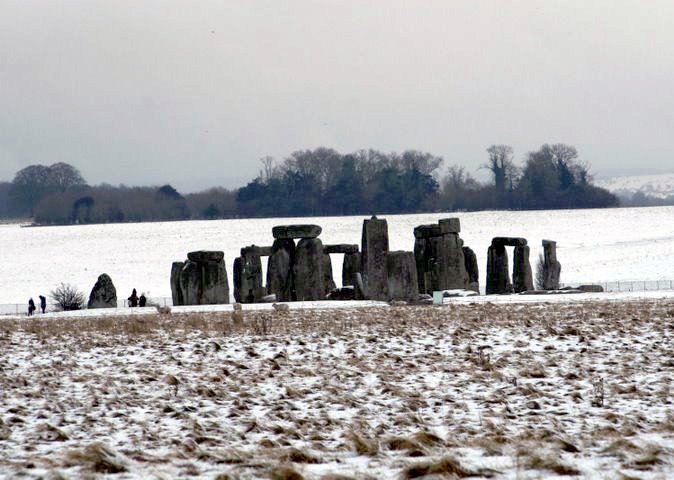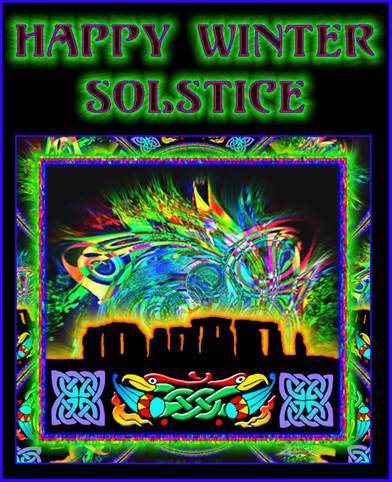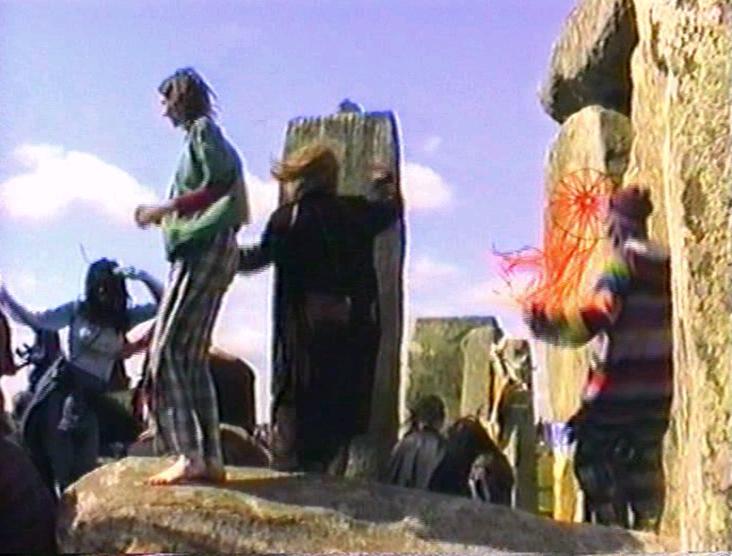Just to give you a little information Not weigh you down. This has not happened together in a long time. If you are up enjoy.
- latest@Stonehenge: (see also latest@g and egroup )
- Astronomical winter solstice is at 23:38 on 21st December 2010 so the nearest (and southest)sunrise is at about 8 a.m. on Wednesday 22nd December , and English Heriticage have promised to open their gates that morning everybody who comes in peace.
- There may be an eclipsed moon visible at sunrise on Tuesday the 21st, English Heriticage may open their gates that morning too, but they may not if its muddy as they dont want the grass too messed up.

The four seasons are determined by changing sunlight (not heat!)—which is determined by how our planet orbits the Sun and the tilt of its axis.
- At the start of spring—the spring equinox—day and night are approximately 12 hours long and the Sun is at the midpoint of the sky. Our north pole tilts towards the Sun.
- At the summer solstice, the longest day of the year, the Sun is at its most northern point in the sky. After this date, the days start getting shorter.
- Fall begins at the autumn equinox. Day and night are about 12 hours long and the Sun is at the midpoint in the sky. The north pole moves away from the Sun.
- The start of winter begins with the winter solstice, the shortest day of the year, when the Sun is at its most southern point in the sky. From then on, the days start getting longer.
| 2010 | |
|---|---|
| WINTER SOLSTICE | December 21, 6:38 P.M. EST |
| Seasons of 2011: | |
|---|---|
| SPRING EQUINOX | March 20, 7:21 P.M. EDT |
| SUMMER SOLSTICE | June 21, 1:16 P.M. EDT |
| FALL EQUINOX | September 23, 5:05 A.M. EDT |
| WINTER SOLSTICE | December 22, 12:30 A.M. EST |
| Seasons of 2012: | |
|---|---|
| SPRING EQUINOX | March 20, 1:14 A.M. EDT |
| SUMMER SOLSTICE | June 20, 7:09 P.M. EDT |
| FALL EQUINOX | September 22, 10:49 A.M. EDT |
| WINTER SOLSTICE | December 21, 6:12 A.M. EST |
Credit: NASA
Sky Map: Total Lunar Eclipse!
The total eclipse of the Moon in the early hours of December 21 will occur on a celestial canvas of superb beauty. A lunar eclipse occurs when the Earth passes between the Sun and the Moon. In this alignment, the shadow of the Earth falls upon the Moon, dimming the Moon and giving it unusual coloring, ranging from muted gray to coppery orange.
While every eclipse is special, this one is attended by many stars and constellations that are beautiful in their own right. The prominent constellations of Orion (The Hunter), Gemini (The Twins), Auriga (The Charioteer), and Taurus (The Bull) frame the Moon on eclipse night.
Large sky map with details
No fewer than six stars of First Magnitude or brighter lie in the region around the Moon; they are labeled on the map below. Lunar eclipses are slow motion events, lasting several hours. Your best viewing strategy will be to check the Moon every 20-30 minutes, starting at about 2:00 a.m.
Explore the sky night from your own backyard. A printable black and white map is provided below.
More Articles:
Trees have always played an important role in the lives and believes of people around the world. They reflect the passing of the seasons of the year as well as the seasons of mankind.
Bits and pieces from a programme about old trees put together with some music. (The name of the programme and the title of the songs are listed in the end titles)





No comments:
Post a Comment